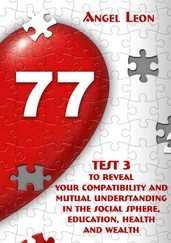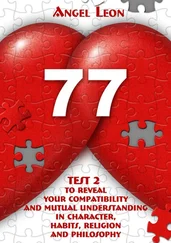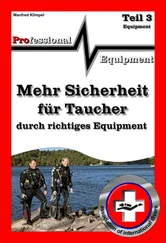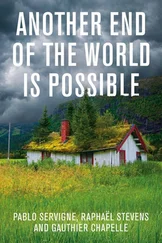1 ...6 7 8 10 11 12 ...16 This last case is beautifully illustrated by the endemic Madagascan orchid, Angreacum sesquipedale , which differs from neighbouring species by its spur, up to 30 centimetres long, at the end of which lies the coveted nectar. Looking at this plant, Darwin, a connoisseur of the relationship between insects and orchids, had wagered as early as 1877 that there surely existed a sphinx (butterfly) with a proboscis of equivalent length. 17 Xanthopan morgani praedicta was duly described in 1903. 18This type of mutualist, exclusive, specialized and audacious relationship is risky, however, because each species then depends entirely on the survival of the other.
A little less volatile, but just as efficient, the African elephant is responsible for the spread of thirty-seven tree species from Côte d’Ivoire, including thirty for which it is the only known disperser. 19On the other side of the Atlantic, in Central America, another elephant, now extinct, surrounded the seeds of the ancestors of courgettes and pumpkins with nutritious dung that conferred an evolutionary advantage. The bitterness of the flesh of these vegetables initially repelled the appetites of smaller animals, before humans replaced the exterminated mastodons by selecting varieties with a more palatable taste – those that we know today.
There are also small examples of original relationships. In Asia, for example, a carnivorous plant from Borneo, the Nepenthes rajah , grows on trees, far from the ground, and so far away from nitrogen sources. But, rather than trap insects in order to obtain protein, like its cousins the carnivorous plants, it has developed a fragrant nectar that treeshrews drink. These small arboreal mammals then use the plant as a latrine, thus providing it in return with the nitrogen it needs. 20
Finally, there are the great fusional relationships. One of the most successful symbioses is undoubtedly the one which led to lichens – an extraordinary chimaera, halfway between fungi and algae. Algae provide the fungus with the sugars they produce by photosynthesis, in exchange for which the fungus give them water, mineral salts and, above all, a shelter, thus allowing them to live in what, for algae, are amazing places. 21Thanks to this association, lichens are found on surfaces as diverse as bark, leaves, walls or on the ground, on all continents (they are the dominant vegetation on 6% of the planet’s landmass) 22and in all climates, including the most inhospitable, such as deserts, mountain rocks and the dry valleys of Antarctica. 23This symbiosis takes its time: the annual growth of some species is limited to half a millimetre per year, with lifespans of up to 5,000 years. 24Here is yet another confirmation of the power of mutual aid, since 20% of the 75,000 species of fungi described to date are engaged in this type of symbiosis. 25
However, the prize goes to an old association dating back 220 million years, 26namely corals, which constitute a particularly rich example of a complex interweaving of beneficial associations. They are a union between colonial polyps (animals close to jellyfish) and zooxanthellae (unicellular algae). The latter provide their animal partners with sugars, in exchange for shelter, nutrients (droppings) and carbon dioxide. 27This circular economy allows the polyp to reduce its energy bill by 90%. Very recently, researchers have found that this symbiosis was even a ménage à trois (at the very least), involving several groups of fungi, some of which directly provide algae with nitrogen. 28
Our most distant ancestors, champions of mutual aid in all categories
It’s time to turn to the species that not only are the ancestors of all those already mentioned (including us), but have also pursued their own evolution in association with other living organisms since the very beginning, 3.8 billion years ago. Bacteria are globally co-responsible for the evolution of all other living creatures and all ecosystems. Nothing less than that. In our culture, bacteria mainly make us think of illnesses. Yet only one species in 100,000 is pathogenic for us, the others being indifferent, harmless or beneficial. 29
Bacteria practise mutual aid at all levels. Within the same species, they very often form aggregates that allow them to survive more efficiently. In these extremely widespread ‘biofilms’, the bacteria in the centre assume a different form from those on the periphery, 30and a complex chemical communication is established between all members of the colony, which can then be considered as analogous to a multicellular organism. 31
Between different species, bacteria have developed amazing forms of mutual aid. 32When the conditions of the environment change, for example, they are capable of adapting quickly by exchanging fragments of genetic material with related species that may be better adapted to the new conditions. All of these incessant exchanges between billions of microorganisms resemble a kind of dynamic bacterial World Wide Web alongside which our own Internet is ridiculously simple. Bacteria thereby acquire such a degree of plasticity that we find them in such incredible environments as thermal springs, acid tars, Antarctic glaciers, the digestive tracts of animals, the sheet metal plates of the wreck of the Titanic , the tiny droplets in clouds and the deepest rocks.
The other species aren’t so stupid as to hesitate: the bacteria have done it all, and they might as well take advantage! So you want to use the huge reservoir of atmospheric nitrogen to make proteins? No worries, there are bacteria that control the process. They have even become the main sources of nitrogen injection into food chains. The legume family, which includes in particular clover, alfalfa, peas, beans and acacias, as well as 19,000 other species described so far, has developed root nodules that house the bacteria of the genus Rhizobium , which fix nitrogen.
What is less well known is that other plants, those that do not have nodules, attract other bacteria that fix nitrogen directly around their roots by transferring up to 10% of their sugars to them. 33In another context, the association between the Anabaena nitrogen-fixing bacteria and the freshwater aquatic ferns of the Azolla genus allows the age-old rice fields of Asia to maintain their fertility without synthetic fertilizers. Given its great responsibility, this is a lovely floating plant which deserves greater renown. 34
Another symbiosis with nitrogen-fixing bacteria promotes the prosperity of the marine phytoplankton (a community essential to the production of oxygen on earth), especially dinoflagellates and diatoms with their delicate glass skeletons. The association is found almost exclusively in areas poor in nitrogen – showing the value of mutual aid when resources are scarce. An even more piquant aspect of the relation lies in the way that, when abundance returns, the hosts shed their symbionts! 35When you live in abundance, help from others no longer seems necessary.
In addition to associating with plants, bacteria have become essential for animals, in particular for their digestive functions. They allow some insects, such as termites and bark beetles, to digest wood, aphids to enrich their diet, and beetles, flies, bugs, lice, cockroaches and cockroaches to feed on nutrients that are in principle difficult to digest. 36One Chinese-American team even showed the ability acquired by a food moth caterpillar and flour worms to digest plastic (polyethylene and polystyrene, respectively), thanks to bacteria. 37Apart from insects, digestive symbioses concern groups as diverse as molluscs (some shellfish have become specialists in the digestion of dead wood), leeches, sea cucumbers, crustaceans and mammals. A single cow rumen contains between 300 and 400 species of bacteria – a veritable microbial universe, to the point that some researchers call it the ‘nutritional superorganism’. 38
Читать дальше












